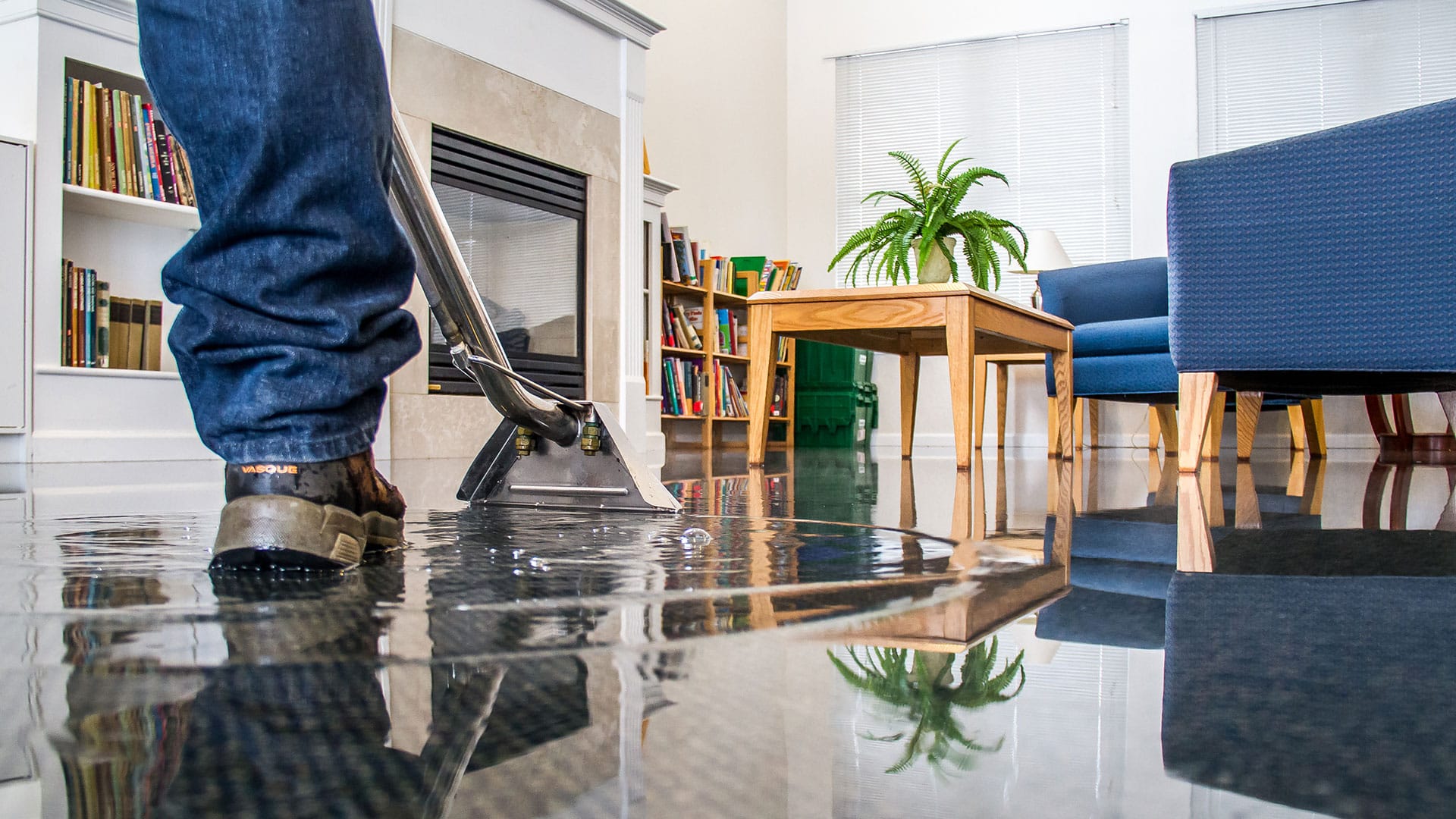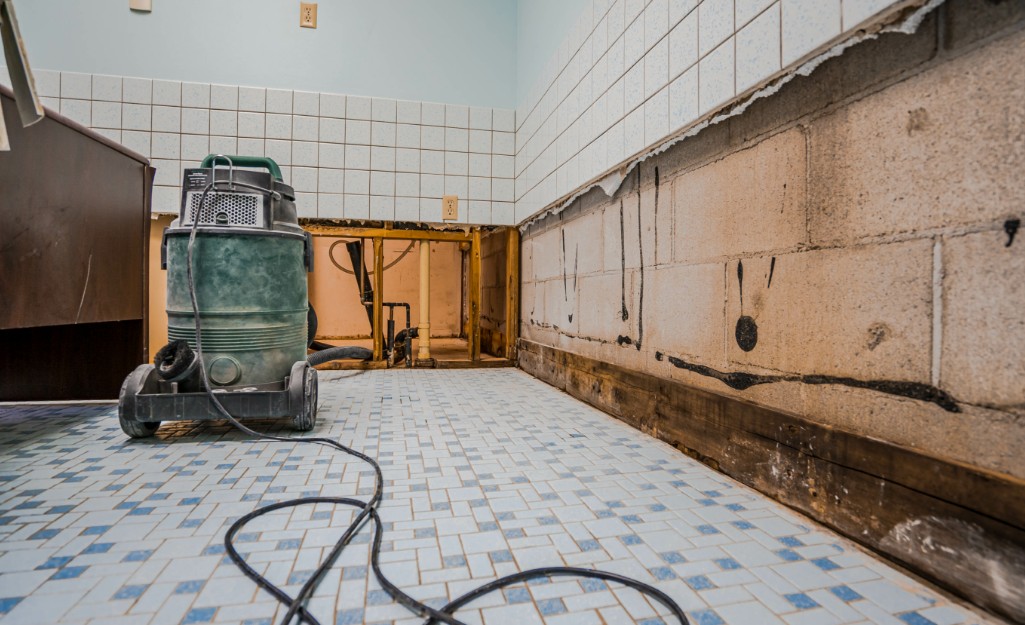How to speed up Water Damage Restoration in your property
Wiki Article
Water Damage Restoration 101: Understanding the Process and Price
Water damage can strike all of a sudden, leaving property owners in a state of complication. Recognizing the remediation procedure is vital for reliable healing. From reviewing the damage to picking the right solution provider, each step influences the overall end result and cost. Variables such as the kind of water damage and necessity also play a considerable role. What are the particular methods used in repair, and just how can one prepare for potential costs?Kinds Of Water Damage

Preliminary Assessment and Inspection

Water Removal Techniques
Following the initial evaluation, effective water extraction strategies are used to minimize damage and avoid more issues. These methods involve using specialized tools such as industrial-grade vacuum cleaners and submersible pumps - Water Damage Restoration. The choice of method depends upon the volume of water existing and the kind of materials affected. For standing water, completely submersible pumps are normally used for quick removal, while vacuums are ideal for drawing out water from rugs and furniture. In addition, progressed methods like water removal floor coverings might be employed for hard-to-reach areas - Flood Cleanup Services. The objective is to eliminate as much water as feasible, lessening the possibility for mold and mildew development and architectural damage. Motivate and effective water removal is vital in the total water damage repair processDrying and Dehumidification Process
As soon as the water removal is full, the drying out and dehumidification procedure comes to be vital to restoring the affected location. This stage commonly uses industrial-grade dehumidifiers and air movers to effectively reduce dampness degrees. The dehumidifiers reel in damp air, removing excess humidity, while air moving companies distribute air to increase dissipation. Monitoring equipment is often used to track humidity and temperature level degrees, making sure suitable drying problems. The period of this procedure can differ depending upon the degree of the water damage and ecological aspects. It is important to completely completely dry all impacted materials, including wall surfaces, flooring, and furnishings, to avoid mold and mildew growth and structural damage. Appropriate execution of this step is essential for an effective restoration end result.Cleansing and Disinfecting Afflicted Areas
When the drying process is total, a thorough initial assessment and inspection of impacted locations is crucial to recognize contamination degrees. Effective cleaning methods and suitable products have to then be employed to get rid of debris and discolorations. Finally, sanitization and sanitation methods are crucial to assure that hazardous microorganisms are removed, bring back the room to a risk-free conditionInitial Evaluation and Inspection
Before starting any type of restoration efforts, an extensive initial assessment and inspection of the impacted locations are essential for effective cleaning and disinfecting. This procedure includes determining the degree of water damage, identifying the resource of the water breach, and evaluating the products influenced. Examiners generally look for indicators of mold and mildew growth, structural integrity issues, and damaged valuables. The analysis likewise consists of inspecting dampness levels making use of customized devices to ensure no surprise water pockets remain, as these can bring about additional problems. Documenting the searchings for is necessary for planning the following action in the reconstruction procedure. A thorough preliminary analysis enables restoration professionals to create a targeted strategy for effective cleaning and disinfecting, inevitably decreasing damage and health and wellness dangers.Cleaning Techniques and Products
Reliable cleaning and sterilizing of water-damaged locations call for a selection of methods and products tailored to the details materials impacted. For porous surfaces like drywall and carpets, extraction approaches are vital to remove excess wetness, followed by deep cleaning with specialized cleaning agents. Non-porous materials such as tile or steel can be cleaned up making use of commercial-grade cleansers that successfully eliminate contaminants. Heavy steam cleaning is one more effective strategy, click to find out more especially for carpets and furniture, as it utilizes high temperature levels to get rid of bacteria and mold and mildew (Flood Cleanup Services). In addition, eco-friendly items are increasingly preferred for their safety and efficacy - Water Damage Restoration. Inevitably, choosing the suitable cleansing approaches and items not only guarantees immediate cleanliness but likewise aids in stopping more damage and carcinogen connected with water intrusionSanitization and Disinfection Techniques
When attending to water damage, correct sanitization and sanitation techniques are vital to ensure the safety and security and health and wellness of the affected atmosphere. After initial cleaning, surface areas should be treated with ideal anti-bacterials to get rid of microorganisms, mold and mildew, and germs that prosper in moist problems. Common approaches include using EPA-approved chemical anti-bacterials, which can be applied with splashing or cleaning techniques. Furthermore, ultraviolet (UV) light systems can successfully disinfect areas by counteracting microorganisms without severe chemicals. The choice of technique often depends on the kind of products influenced and the extent of contamination. Inevitably, thorough sanitization not only recovers a safe home however likewise aids protect against future wellness threats related to sticking around dampness and mold and mildew development.
Repairs and Restoration Options
Examining the damage brought on by water exposure is crucial for establishing the ideal repairs and remediation choices. House owners might encounter numerous concerns, including damaged drywall, distorted flooring, and jeopardized structural aspects. Depending upon the degree of the damage, fixings might include replacing areas of drywall, setting up brand-new flooring, or reinforcing structural beams. In cases of severe damage, full substitute of afflicted materials could be necessary. Additionally, specialist conservators commonly suggest utilizing moisture meters to analyze covert wetness degrees before making a decision on the most effective training course of action. It is necessary to act quickly to prevent mold and mildew growth and more degeneration. Selecting the best alternatives not only brings back the property yet also assures long-term security and functionality.Aspects Affecting Restoration Expenses

The level of water damage straight impacts the remediation costs house owners can anticipate to incur. Elements such as the source of the water, the duration of direct exposure, and the damaged materials considerably influence pricing. As an example, clean water damage from a broken pipe is typically less pricey to restore compared to damage brought on by sewer. In addition, the degree of contamination determines the requirement for specialized cleansing and disposal services, further increasing expenses. Geographic area likewise plays a function, as regional labor rates and schedule of repair solutions can differ. Ultimately, the necessity of the response affects costs; quicker interventions commonly bring about lower total expenses by avoiding additional damage. Recognizing these variables is essential for homeowners when estimating repair expenses.
The three primary kinds of water damage are classified based on contamination levels: clean water, grey water, and black water. An extensive initial evaluation and inspection are essential steps in the water damage restoration procedure. For standing water, submersible pumps are commonly utilized for quick removal, while vacuum cleaners are perfect for extracting water from carpetings and upholstery. The level of water damage directly impacts the reconstruction sets you back property owners can anticipate to incur. Tidy water damage from a busted pipe is normally less expensive to recover compared to damage triggered by sewer.
Report this wiki page